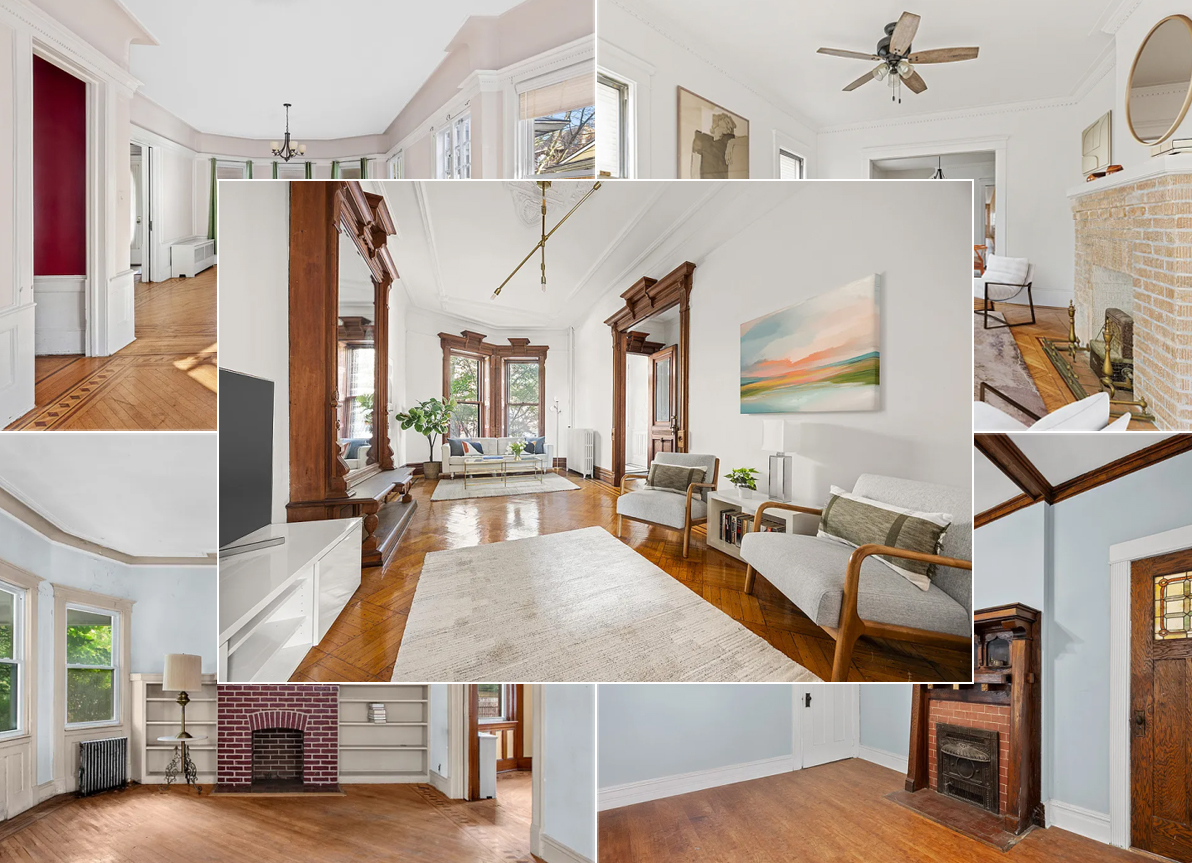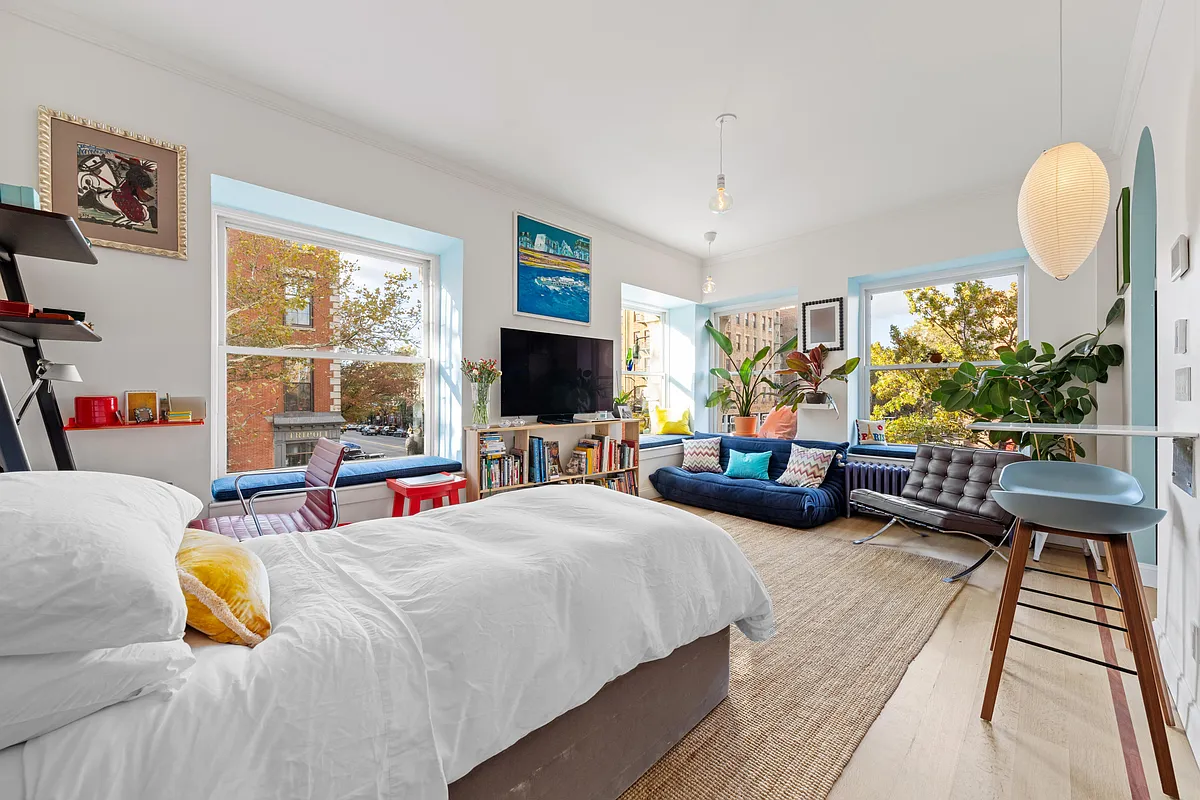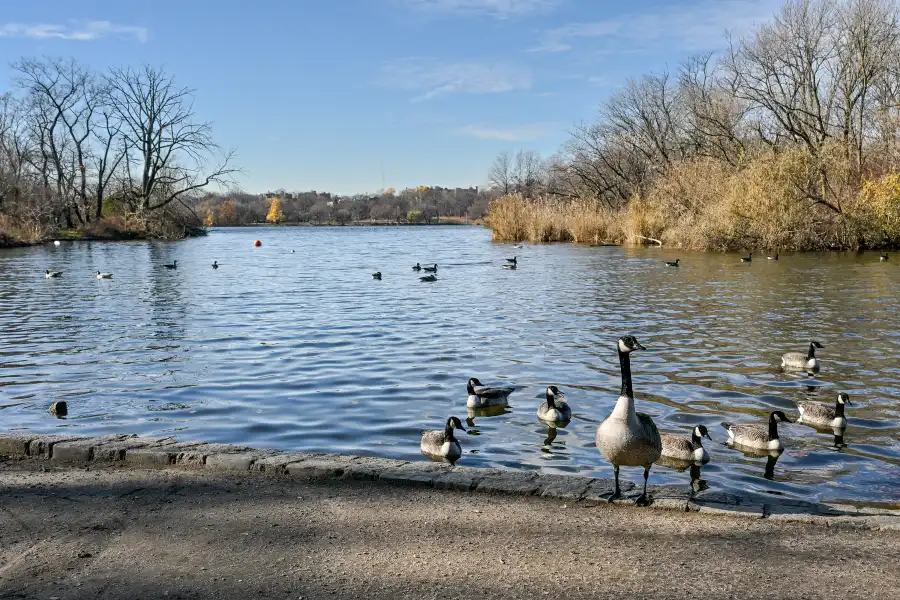The Lowdown on 31 Joralemon
[nggallery id=”43834″ template=galleryview] Last week there was much ado when a reader sent in a photo of 31 Joralemon Street in Brooklyn Heights, where an entire sidewall had been removed. We’ve now got all the dirty details from Michael Ingui from Baxt Ingui, the architects on the job. Pretty interesting—and scary: The existing wall at…
[nggallery id=”43834″ template=galleryview]
Last week there was much ado when a reader sent in a photo of 31 Joralemon Street in Brooklyn Heights, where an entire sidewall had been removed. We’ve now got all the dirty details from Michael Ingui from Baxt Ingui, the architects on the job. Pretty interesting—and scary:
The existing wall at 31 Joralemon Street was a frame wall with brick infill and at one point in its life was an interior party wall. We did interior demolition (filed under a separate permit) and uncovered a pretty scary sight. At some point this wall shifted and created an S curve on multiple levels. The wall came in past the center by 6 at the garden level, out 6 past the center at the parlor level, back in again at the second floor, and back out again at the 3rd floor. The walls were furred on the interior masking the condition and the exterior had a cement coating applied that in some areas was 5 thick to mask the issues with the wall. It is amazing that the wall stood for all of these years.
If you have to be in a situation like this it is nice to have a good team. Sam and the crew from Creative Renovations took the wall down methodically (not easy given all of the issues), the house is fully shored and the engineer on the project is D’Huy Engineering (the structural is filed and approved at the DOB and LPC). At the end of the day the wall will look just like the old wall except that it will actually stay up. The photos attached show the house from the street (taken today), Interior shoring (there are a few methods that the engineer is using including using the bearing wall by beefing it up with 4 x 4’s and bracing it), shoring at the garage, view of the stairs.
Good to hear it’s all under control!
31 Joralemon Reno Attracts Scrutiny [Brownstoner]





DeLepp, the lintels on the rear of my Brownstone were slate, I believe.
delepp, early houses like this did have brownstone lintels. They are solid blocks of brownstone that tended to be of a much better quality than the later veneer brownstone.
I hope this person gets their $500 inspection fee back.
Thanks for the lesson all.
DeLepp, brownstone can last hundreds of years IF it was cut and applied properly in the first place. The soft sandstone has a grain, like wood, and is supposed to be stacked so that the open grained end of the block is on the inside, not facing outward. When the grain faces out, it is subject to the trials and tribulations of water, ice and weather. That’s why some brownstones in a group look pretty much intact, while the one next door looks like crap, spalling away like a glacier.
Other things factor into that, as well, of course, but if something is done right in the first place, it makes a big difference.
I walked by here on Sunday. Amazing to see how they’ve shored up the house. And pretty cool to see inside the house, top to bottom.
DeLepp, it depends on how the brownstone was cut. If it was cut properly (i.e. against the natural layering of the sedimentary rock) so that the layers of the stone run perpendicular to the facade of the house, then there is little to no significant deterioration. If the layers of the stone are parallel to the facade, then you get spalling where water gets into cracks, freezes, thaws, and over time cause thin sheets of stone to fall off.
Also, in rare cases, I understand that some places were built of entire blocks of brownstone, but I have never seen that myself.
minard, so the federal houses with brownstone lintels that I see thru BH are cosmetic additions? What were lintels made up before then, if they even had them.
brownstone was used as a veneer material on brick houses. Most of the stone that was used on residential properties in Brooklyn was extremely poor quality and it started to peel off and delaminate almost immediately. Good quality brownstone can be seen on buildings such as Trinity Church and the Villard Houses in Manhattan.
New brownstone from quarries here and abroad can be of an excellent quality, much better that the stuff that was used in the 19th century but it is very expensive. Most people repair their brownstone with tinted stucco carefully sculpted by artisans to look like dressed stone.
There will be a quiz at 11:30.